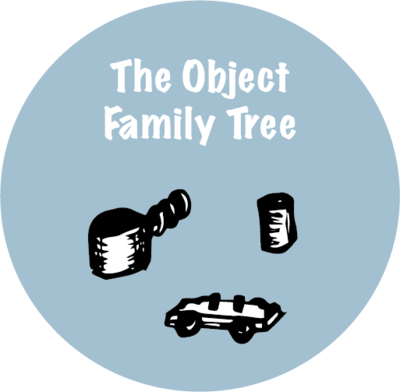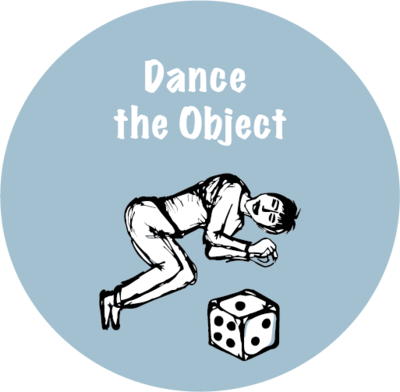Findings
We used Satelliting Objects with designers to investigate how objects can be placed in different relationships to other objects and people. This exercise pushed the designers to consider the object as a physical artefact, exploring its form, shape, and surface area in relation to another person and an object. The object was decontextualised and brought together with a random object that it would not necessary be combined with. In this way the object was unfrozen from taken-for-granted associations and handled as a physical artefact, with certain geometrical, physical, and material qualities enabling and constraining different movement possibilities. The process was not about charging the object with a metaphor or giving it a symbolic meaning up front, which happened in the Object Family Tree. Sometimes, in Satelliting Objects, new meanings arose from the relational composition and entanglement of objects. The new composition created a new narrative or an idea of a functional mechanism.
Functionality, shape, and form
The physical exploration allowed the appreciation of the relationships of objects and how objects have relationships to other objects and people. It emphasised the object’s form, shape, pivot and axis, surface area, and differing textures. In the video, Sean and Sam explore the box and the pan. They try out the basic functionality of the box, opening and closing it with the help of the pan. The two solid objects have large aligned surface areas that affect each other. The exercise was still about sensitising to objects, but it was less intellectual and more physical. It placed focus on understanding the mobility of objects and their relationship to each other, in different textures, forms, and surfaces.
Object entanglements and surprises
In the interaction, there were several surprising moments between two people and their objects. Unforeseen relationships between the objects emerged as the physical manipulation advanced. Entanglements gave ground to imagine how different textures and objects might go together, complement, or resist each other. In the video, Rita and I found a surprising entanglement between the glasses and the wooden toy. The glasses became a platform for the wooden parts and the string to settle in an equilibrium. The objects found a new relation to each other and performed together in an unforeseen way. Another relational surprise happened for Paul and Tanya between their plastic game board pieces and the tea strainer. The two objects went smoothly together – like a matching peg and hole.
Part of object theatre is to explore the movement possibilities of objects. In the Satelliting Objects exercise, two objects are explored through mechanics, surface and material relationships, playfulness and functionality. The physicality of objects plays a key role through attachments and dis-attachments of certain objects of different shape, form, function, purpose and materiality.
- Pair up and pick one object each that you would like to investigate. You explore the objects together.
- Divide roles first. One person holds an object still in front of you at a good arm's-length distance. The other person explores the stationary object with their own object by moving it around the stationary object.
- You are looking at every aspect that each object has, every angle of that object and what it can go around. All the shapes, different angles, the sphericalness, interiors, exteriors, edges, and peripheries of objects, how the objects can unite and entangle.
- Change the roles and explore the objects again with the roles reversed. The previously satelliting object is held still and the previously stationary object moves around it.
Teaching method
The Satelliting Objects exercise is developed for puppeteers to understand connections, disconnections, and movement possibilities of objects when creating puppets out of composite objects. As an example, through the exercise performers can investigate how a round bottle moves on its own accord and what the movement potential of the object is. The process enhances object theatre practitioners’ understanding of functional mechanisms, connections between objects, and how a composite object can move. The Satelliting Objects exercise is open by nature, allowing the possibility to come across new ideas, surprises, and accidents (e.g., entanglements of objects), which might give narrative ideas for theatre practitioners during the exploration. Different from the Family Tree exercise, the Satelliting Object exercise does not impose a narrative on objects, but a narrative emerges from the physicality of the object play and the objects themselves.
Extending the potential of handling and holding objects
Satelliting two objects revealed the subtle differences between holding and handling an object. When one object was still standing, the focus was on the movement potential that the other object had around the static object. In this way it became crucial from which point the still-standing object was held and which way it was standing. The object manipulation played an important role in the exploration. In the example of the frying pan, Sean was constantly altering the way and the point at which he held the object. The pan revealed itself in a new way depending on whether it was held from the handle or from the edge.




